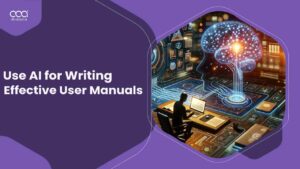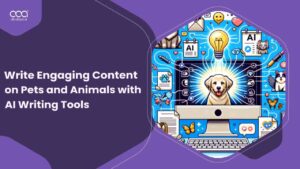The creation of vivid worlds and complex characters is a major part of fantasy stories. The advent of AI writing tools has opened new frontiers for authors, allowing them to delve deeper into their imagination and bring their fantastical visions to life.
In this article, I’m going to discuss how to craft fantasy worlds and characters with AI writing tools in Germany. If you’re looking to make the most of the best AI writing tools in your possession, you’ve come to the right place. Let’s get into it!
How to Craft Fantasy Worlds and Characters with AI Writing Tools in Germany for 2024 – A Step-By-Step Guide
One of the major parts of any story is the world the story is set in and the characters that inhabit that world. Artificial intelligence has reached a point where it can help budding writers create fantastic worlds with fully fleshed out characters.
Here’s how to craft fantasy worlds and characters using AI writing tools.
Creating Fantasy Worlds
First, I’m going to discuss how to create worlds with AI.
Step 1: Define the Core Concept
- Start with a Core Idea: Begin by defining the central theme or concept of your fantasy world, like a unique civilization or a mystical force.
- Use AI for Inspiration: Input your core idea into an AI writing tool, such as OpenAI’s GPT-4, to generate a variety of concepts related to your theme, expanding and enriching your initial idea.
Step 2: Develop the Setting
- Generate Geographic and Cultural Elements: Use AI tools like Jasper AI to create descriptions of landscapes, cities, and cultures, including climates, topographical features, and societal norms.
- Refine with Personal Touch: Select the AI-generated ideas that resonate with your vision, adding personal touches to enhance the uniqueness of your setting.
Step 3: Establish the Magic System or Technology
- Create a Unique System: Decide whether your world has magic, advanced technology, or both. Use AI to suggest workings, limitations, and societal impacts of these systems.
- Integrate this system into the World: Ensure your magic or technology system affects all aspects of your world, influencing geography, politics, culture, and daily life.
Step 4: Build Societal Structures and History
- Societal Structures: Utilize AI to generate various societal structures and government types. Consider how power dynamics manifest within your world.
- Historical Background: Develop a rich history with the help of your chosen AI writing tool, including major events, conflicts, alliances, and influential historical figures shaping your world.
Step 5: Finalize World Details
- Add Specific Details: Use AI to flesh out details like currency, language, clothing, cuisine, and rituals, enhancing the believability of your world.
- Ensure Consistency: Review the AI-generated content for consistency, ensuring every element aligns with the overall concept and feel of your world.
Creating Characters
Now, let’s discuss using AI to create characters.
Step 1: Establish the Basic Character Profile
- Basic Details: Start with basic details – name, age, race, occupation, and story role. Consider how these aspects influence your character’s identity.
- AI-Generated Suggestions: Use tools like Sudowrite to suggest unique characteristics, enhancing your character’s distinctiveness and depth.
Step 2: Develop the Backstory
- Craft a Backstory: Create a compelling backstory for your character, including their upbringing, formative experiences, and driving motivations.
- Use AI for Depth: Input basic details into an AI tool to generate a complex backstory, adding layers and depth to your character.
Step 3: Determine Personality Traits and Motivations
- Personality Traits: Define a mix of personality traits. Use AI to suggest a diverse range, ensuring your character is multi-faceted and believable.
- Motivations and Goals: Establish clear motivations and goals. AI can provide creative suggestions that align with your character’s personality and backstory.
Step 4: Create Relationships and Interactions
- Relationships: Brainstorm potential relationships and dynamics using AI, considering how these interactions shape your character’s journey.
- Interaction Patterns: Determine your character’s interaction styles. AI can offer insights into speech patterns, body language, and emotional responses.
Step 5: Visualize and Refine
- Visualize Your Character: If available, use AI visualization tools like DALL-E to create a graphic representation of your character, aiding in further development.
- Refinement: Review and refine the AI-generated details, ensuring your character is consistent, compelling, and well-integrated into the fantasy world.
Weaving Enchanting Plotlines Using AI

Creating an enthralling plotline is a crucial aspect of storytelling, especially in fantasy literature, where learning how to craft fantasy worlds and characters with AI writing tools in Germany opens up new horizons in plot development.
These tools can assist in generating ideas, organizing story arcs, and adding unexpected twists. Let’s delve into how AI can be instrumental in crafting captivating plotlines.
Understanding AI’s Role in Plot Development
AI as a Creative Catalyst
AI writing tools, like OpenAI’s GPT-4, can act as a creative catalyst. They analyze vast amounts of text and understand patterns in storytelling, which enables them to generate a wide array of plot ideas.
These can range from basic story outlines to intricate plot twists, offering writers a starting point or new directions for their narratives.
Expanding Plot Possibilities
AI algorithms can suggest diverse scenarios and subplots that a writer might not have considered. By inputting the basic elements of your story – such as characters, setting, and initial conflict – AI can propose various developments, enhancing the complexity and richness of the plot.
Structuring the Narrative with AI
Crafting the Narrative Arc
Structuring a narrative can be challenging. AI tools can help writers outline the key components of their story, such as the exposition, rising action, climax, falling action, and resolution. This ensures a balanced and engaging narrative flow.
Consistency and Coherence
AI can assist in maintaining consistency and coherence throughout the plot. It can analyze the entire narrative for plot holes or inconsistencies and suggest modifications to enhance logical flow and continuity.
Adding Depth to Plotlines
Developing Subplots
AI tools are particularly useful in developing subplots that complement and enrich the main storyline. They can create intricate, interwoven subplots that add depth to the narrative and flesh out the world and characters.
Emotional Depth and Conflict
AI can also suggest ideas for creating emotional depth and conflict, which are vital for a compelling story. By understanding the motivations and traits of characters, AI can propose scenarios that challenge them, driving the narrative forward.
Innovating with Unexpected Twists
Introducing Plot Twists
One of the most exciting aspects of storytelling is the plot twist. AI can generate unexpected turns in the story, keeping readers engaged and surprised. These twists can be pivotal moments that significantly alter the course of the narrative.
Balancing Predictability and Surprise
AI tools can strike a balance between predictability and surprise. They can ensure that plot developments, while unexpected, still feel coherent and plausible within the story’s world.
Using AI Feedback for Refinement
Iterative Refinement
The plot can be refined iteratively with AI feedback. Writers can input revised versions of their story into the AI tool, receiving suggestions for further improvement and refinement.
Testing Different Plotlines
AI allows writers to explore and test different plotlines to see which works best for their story. This process can reveal the most compelling narrative path and help fine-tune the overall plot.
Polishing the Prose: AI as a Writing Assistant

Beyond ideation, AI writing tools are invaluable in refining and polishing writing, especially when learning how to craft fantasy worlds and characters with AI writing tools in Germany, as they assist with grammar, syntax, and style, enhancing the coherence and appeal of the narrative.
This feature is particularly useful in maintaining consistency in the narrative voice, a key element in fantasy writing, thus improving the efficiency of your content creation process.
Here’s how AI writing tools can help improve the writing quality of your story.
The Role of AI in Enhancing Writing Quality
Grammar and Syntax Correction
AI writing assistants, such as Grammarly or ProWritingAid, excel in correcting grammatical errors and syntax issues.
These tools scan the text for common mistakes like misplaced commas, incorrect verb tenses, and sentence fragments, ensuring that the prose is grammatically sound.
Style and Tone Adjustments
Different stories require different styles and tones. AI tools can analyze the prose and suggest adjustments to align with the desired tone, whether it’s formal, conversational, or descriptive.
They can also help in maintaining a consistent style throughout the text, which is crucial for reader engagement.
Improving Readability and Clarity
Simplifying Complex Sentences
Writers sometimes inadvertently craft sentences that are too complex or convoluted. AI assistants can suggest simpler constructions or break down long sentences, improving the overall readability of the text.
Eliminating Redundancies and Jargon
AI can identify and suggest alternatives for redundant phrases or unnecessary jargon. This refinement makes the prose more accessible and enjoyable for a broader audience.
Enhancing Descriptive Language
Vocabulary Enrichment
AI tools can suggest more vivid and precise vocabulary to replace generic words. This enrichment of language can bring scenes and characters to life, creating a more immersive experience for the reader.
Imagery and Metaphor Suggestions
Some AI writing assistants are capable of suggesting creative metaphors and imagery, adding a layer of poetic quality to the prose. They can even be used to write songs, if that’s part of your story. This can be particularly valuable in genres like fantasy, where evocative descriptions play a crucial role.
Consistency and Coherence Checking
Maintaining Character and Setting Consistency
AI can assist in tracking character attributes and setting details, alerting writers to any inconsistencies. This ensures that characters remain true to their established traits and settings remain consistent throughout the narrative.
Narrative Flow Analysis
AI tools can evaluate the flow of the narrative, identifying pacing issues or disjointed sections. They can suggest rearrangements or edits to improve the logical progression of the story.
Real-Time Feedback and Learning
Instant Feedback
One of the key advantages of AI writing assistants is the provision of real-time feedback. This immediate response allows writers to make on-the-spot improvements, streamlining the editing process.
Adaptive Learning
Many AI tools have adaptive learning capabilities, meaning they can learn from the writer’s style and preferences over time. This personalized assistance makes the tool more effective and tailored to the specific needs of the writer.
The Future of Fantasy Writing with AI

Learning how to craft fantasy worlds and characters with AI writing tools in Germany offers a glimpse into the future of storytelling, where technology enhances the creative process.
As these tools evolve, they will offer even more sophisticated assistance in crafting intricate fantasy worlds and narratives.
- Enhanced World-Building Capabilities: Future AI tools will offer more sophisticated world-building capabilities, generating rich, multi-layered fantasy worlds complete with complex ecosystems, intricate societies, and detailed histories, allowing writers to explore more nuanced and diverse settings.
- Collaborative Storytelling Platforms: Emerging AI platforms will facilitate collaborative storytelling, where multiple authors can contribute to a shared fantasy world, with AI ensuring narrative coherence and consistency, thus creating vast, interconnected story universes.
- Dynamic Character Development: AI will evolve to provide dynamic character development tools, capable of generating deeply detailed character backgrounds, evolving personality traits, and interactive story arcs that respond organically to plot developments.
- Interactive and Adaptive Narratives: We will see the rise of interactive fantasy stories, where AI modifies the narrative in real-time based on reader choices, leading to personalized story experiences with multiple branching pathways and endings.
- AI-driven Visual and Sensory Imagery: Advanced AI will be able to create immersive visual and sensory experiences, integrating text with visual and auditory elements, offering readers a multi-sensory narrative journey, transforming how fantasy stories are consumed and experienced.
FAQs
Can AI writing tools create entire fantasy worlds?
Are AI-generated fantasy plots original?
Are there any limitations to using AI for fantasy writing?
Can AI tools help with world-building aspects like maps and geography?
Conclusion
AI writing tools are revolutionizing not just blog posts and social media, but also the way fantasy worlds and characters are created. By offering inspiration, assistance in world-building, character development, and narrative structuring, they are becoming incredibly useful tools for fantasy writers.
In this article, I’ve provided a comprehensive look at how to craft fantasy worlds and characters with AI writing tools in Germany. Looking to learn more about how else AI tools can help your content generation efforts? Check out the other articles I’ve written in the How To Series on All About AI.





